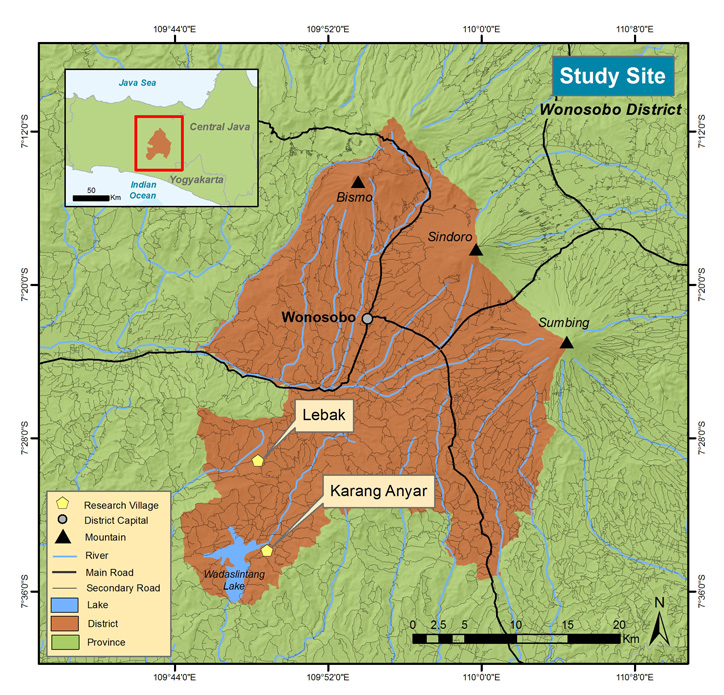
- PMRV
- Background
- Study site
- Central Java
Central Java

Of the three provinces of the PMRV Project, Java shows more of a trend in forest transition. In fact, despite its high human population density, Java is where most reforestation efforts occur in Indonesia. This is one of the reasons we selected Java as a PMRV project site. Central Java – especially Wonosobo – is one example of this trend. Wonosobo’s landscape is fragmented into patches of dense settlements, planted forests and fast growing crops (e.g. paddy fields).
In Wonosobo we worked in two villages, Lebak and Karanganyar, where Perhutani (Indonesia’s state-owned forestry company) has large plantations and a long history of involving local people in its management. Illegal logging in Perhutani planted forests in Wonosobo has occurred since the reformation order (Reformasi) and its climax in early 2000. At the time, many pine trees were felled illegally and the Perhutani concession was transformed into bare land. Meanwhile, the local council and nongovernment organizations worked to implement the Community-based Forest Resources Management (PSDHBM) regulation, which they eventually succeeded in doing. Nowadays, local people periodically work in Perhutani’s forests; they tap resin from pine trees and practice agroforestry under the pine forest canopy. Both activities contribute to their livelihoods. They also cultivate various plants, such as cassava, pineapple, cardamom and taro, in the understory.
Outside the area managed by Perhutani, community-based forest management (hutan rakyat) is one of the local people’s sources of livelihood. In these forests they plant various tree species such as albizia (Paraserianthes falcataria), mahogany (Swietenia macrophylla) and teak (Tectona grandis). Even though it takes time to earn money from planting trees, it remains popular among farmers because of the high demand for particular species. When the farmers plant trees, they also use the understory to plant various crops, similar to those cultivated in Perhutani’s understory.
Local people also grow rice. Three crops a year can be grown in paddy fields (sawah) and two crops a year using rainfed systems (sawah tadah hujan). Both systems are used in Lebak. In Karanganyar paddy fields produce only one crop a year using a tidal (pasang surut) system. The tidal system uses the water levels of the Wadaslintang Reservoir during certain months.


